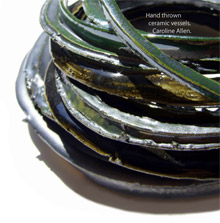Uwe Sperling (Tartu University)
Areas east of the Baltic Sea are renowned for their scarcity of metal-finds in Bronze Age periods. On the other hand there is plenty of archaeological evidence concerning the processing of metal objects. Several Estonian, Latvian and Lithuanian settlement-sites, mainly those of hill-fort type dating to the end of the Bronze Age, are described as places with flourishing economies where larger communities practised craftwork in addition to mixed subsistence strategies.
At most of these sites casting remains – clay moulds and crucibles – have been found in large numbers, in Estonia reaching up to thousand. It is of interest that metal workshops as the Asva-site focused primarily on the processing of ring-shaped objects in lost-wax casting. As we know, rings appear as predominant elements in many forms in mixed metal hoards (as garments, torques, and ingots) in the Nordic and Baltic region. Another peculiar fact is that these local ring products vanished almost completely from the archaeological record. Furthermore, finds of bronze objects indicating an high technological-artistic level are very rare in this area.
When referring to missing skill, complexity and creativity in the local bronze work we might consider depositional-cultural factors possibly distorting our image of past realities. But above all the preference of casting ring-objects could be ascribed to strategic behaviour. Are we dealing with commoditized ring-shaped objects (ingots), as means of exchange in response to the growing regional diversification of subsistence economies? In analysing the Estonian bronze work the paper aims to discuss crafts and objects from a socio-economic perspective. In addressing the ring-objects as sort of high-end specialized (semi-) products, meant for further distribution and processing, aspects as creativity and complexity in bronze work appear in new light – concerning any strategic-economical implication of bronze work production as well.


